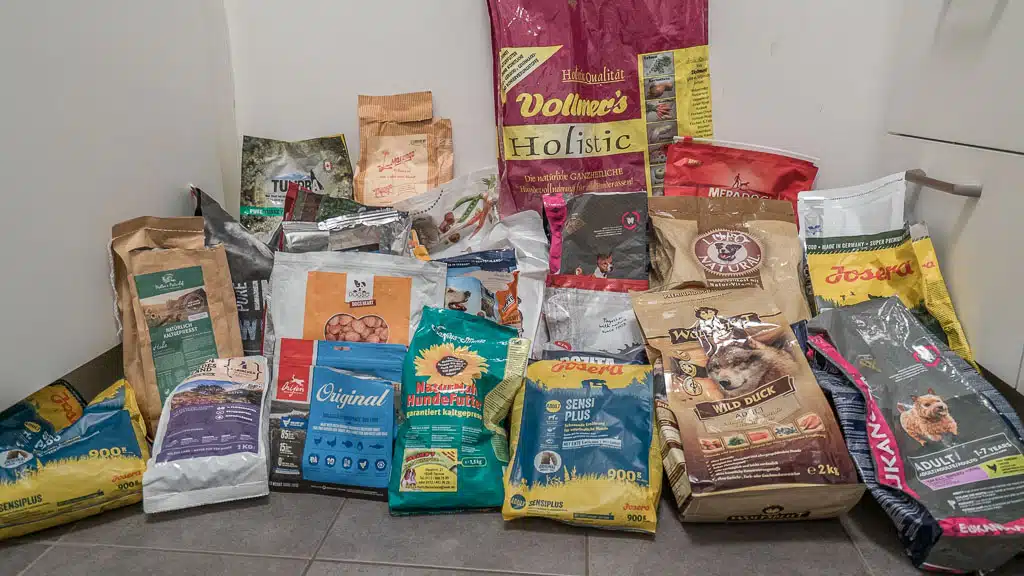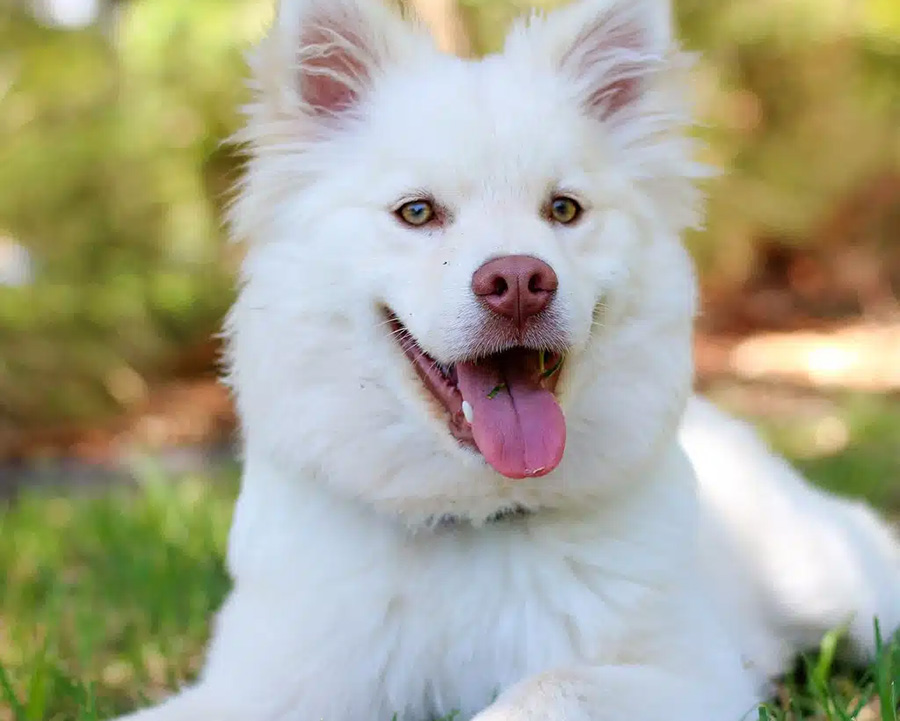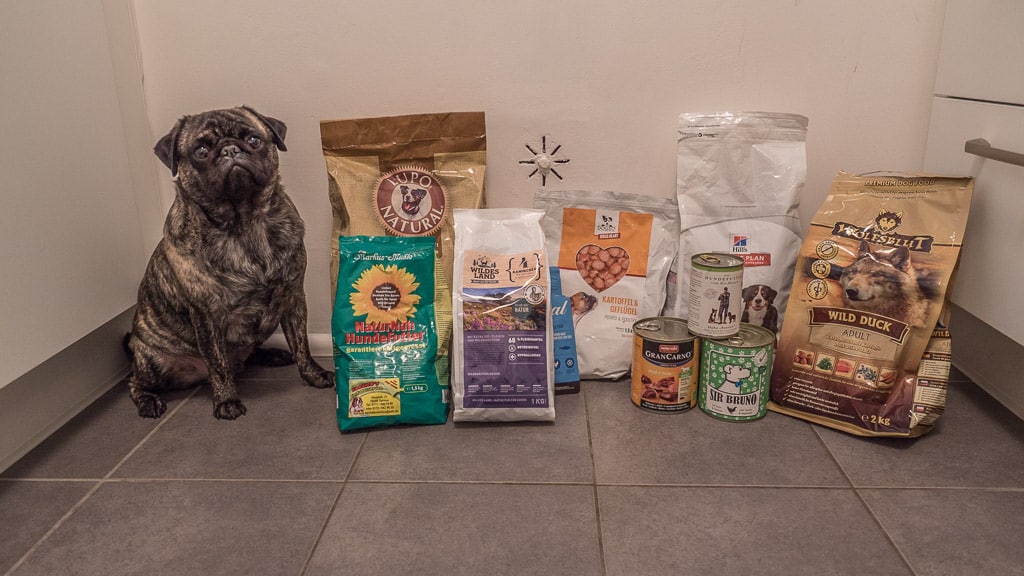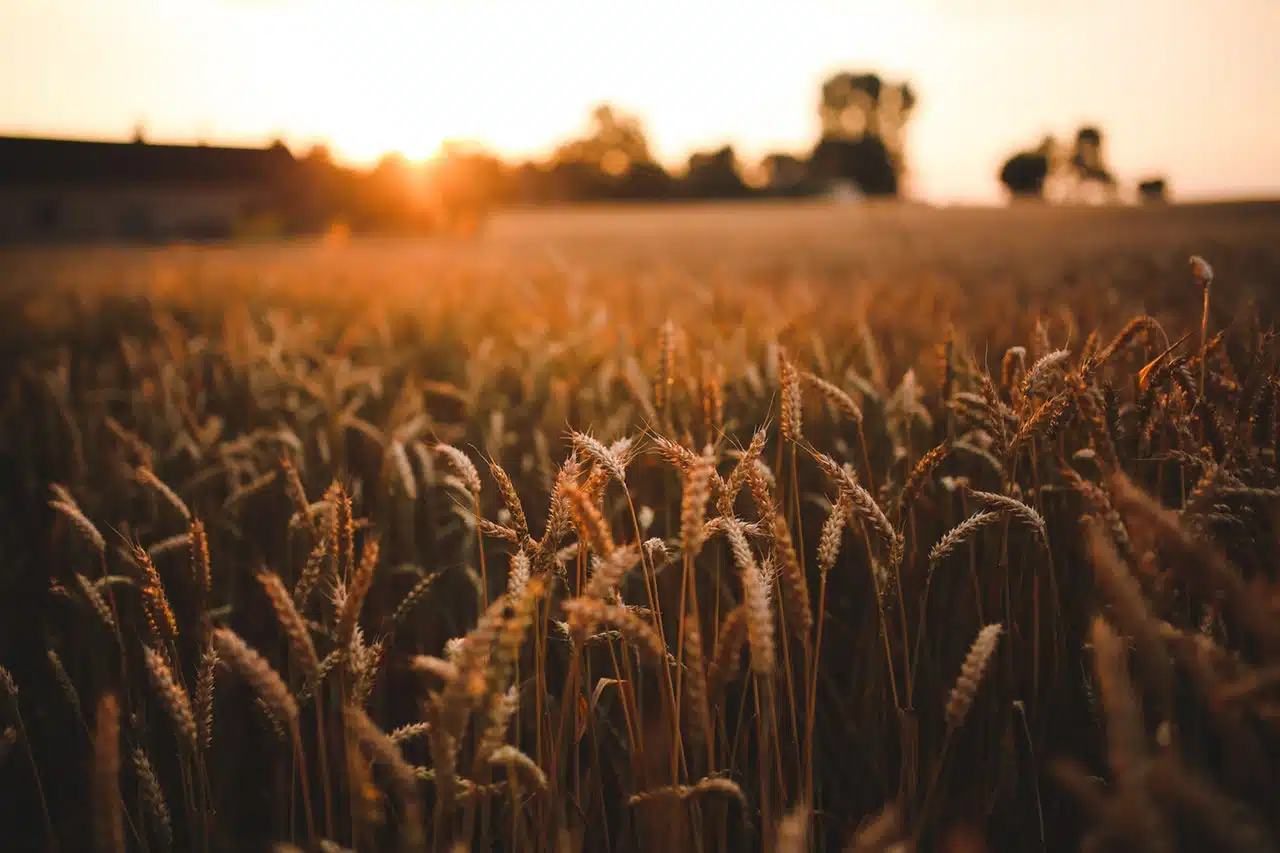Are you considering switching to grain-free dog food? We’ll show you the pros and cons of grain-free dog food and recommend brands we trust. Discover the top results and ensure a healthy diet for your dog with us.
Our Top Picks
[table id=12 cache_table_output=false /]
Who is this test for?
Our test is suitable for all dog lovers who feel overwhelmed by the countless dog food options available or simply want to thoroughly inform themselves to provide their dog with optimal nutrition.
Our Testing Criteria
Before subjecting the individual dog food varieties to a detailed examination, we consulted with experts and veterinarians. We gathered all possible information and compiled it.
With this information, we conducted online research. After browsing through more than 100 products, we ordered some and tested them thoroughly.
How the Test Works
We examined all the ordered products closely, from the size of the kibble to the labeling on the packaging itself. We focused primarily on the composition.
Products that are grain-free made it to the next round. A healthy mix of proteins, fruits, and vegetables is also important.
Here are our specific criteria for dry dog food testing.
If all the points convinced us, we included the grain-free dog food in our test list.
What is Grain-Free Dog Food?

With the plethora of dog food options available on the market today, making a choice can be challenging. Looking at the ingredients and composition can help.
Many dog foods today consist of over 50% grain, often used as a filler. Especially budget providers include a lot of grain in their food. Grain-free dog food, on the other hand, incorporates a higher proportion of meat, aiming for a more species-appropriate diet for the dog.
In general, all other ingredients are also present in other types of food. Carbohydrates, fiber, and minerals are important, as are vitamins. Dogs can do without grain.
What sets it apart?
Grain-free dog food is rich in healthy and high-quality ingredients, particularly excelling in its meat content. Muscle meat and offal, along with fresh meat, meet the dog’s daily needs for fat, protein, and amino acids.
A good grain-free diet is complemented by vegetables, providing the dog with carbohydrates and fiber. Lastly, herbs, roots, and oils provide sufficient minerals, vitamins, and fatty acids.
Positive Effects

The high-quality ingredients of grain-free food have a positive impact on the health of the dog. By eliminating all types of grains, there are fewer intolerances.
The main cause of intolerances in dogs is usually grains. Moreover, allergies are much less common. The dog’s digestion is significantly improved by grain-free food. Additionally, the stomach is spared as it no longer has to work as hard.
Difference from “regular” food?
The main difference between grain-free and “regular” dog food lies in the grains. “Regular” dog food consists of a very high percentage of various grains. Grains are used as cheap fillers, resulting in vegetables, meat, and other ingredients being included in very small quantities.
In grain-free dog food, grains are replaced by potatoes and various vegetables. This has the great advantage that the food is much more digestible. Additionally, it contains much more and healthier ingredients than “regular” dog food.
Grain-free food is an excellent source of fiber, minerals, and vitamins, which would have to be supplemented with additives in “regular” dog food.
There are also noticeable differences in excretions. While the feces of a dog fed with “regular” dog food has a very unpleasant odor, the feces of a dog fed with grain-free food is much more odor-neutral.
Another important difference concerns allergies. With “regular” food containing grains, the dog often develops allergies or food intolerances. This is mainly due to the grains. With grain-free dog food, allergies cannot occur as there are no grains included.
What should be in good Dog Food?

To keep your dog healthy and active throughout their life, you should consider various factors when choosing dog food. The focus should be on avoiding grains.
However, to ensure your dog still gets all the essential minerals, vitamins, and fiber, fats, proteins, carbohydrates, and fatty acids should be included.
When preparing the food, you should pay close attention. Gentle preparation combined with high-quality ingredients is the guarantee for good grain-free dog food.
Who is Grain-Free Food suitable for?
This dog food is suitable for all dogs that need to be well-nourished from the start or for dogs with sensitive stomachs or intolerances.
The market now offers a variety of food options, which also differ in taste. There is not only grain-free food with chicken or duck, but also with beef, venison, or fish.
The selection is vast, so there is suitable grain-free dog food for your dog as well.
How harmful is Grain in Dog Food?

Generally, grain in dog food is not dangerous or unhealthy. While it can trigger allergies, allergies can also occur with eggs, protein, or meat. Additionally, digestion is often taken into account.
Grains are actually very digestible because the starch in carbohydrates is quickly converted into energy. Moreover, ancestral dogs consumed many types of grains when they ate their prey.
The main reason for avoiding grains is to ensure that your dog receives more of the other valuable nutrients and that grains can safely be omitted. If your dog already has allergies or similar issues, it’s advisable to switch to grain-free food.
How do I recognize an intolerance?

You should pay close attention to the following symptoms in your dog:
- Large amounts of feces due to low digestibility
- Diarrhea or even vomiting
- Loss of appetite
- Flatulence or colic
- Constant paw licking
- Inflamed ears
- Head shaking
- Itching, hair loss, or other allergic skin reactions
If these symptoms persist for several days, a visit to the vet is necessary. Together with the vet, the causes will be determined, and at the same time, the food can be changed.
Grain-Free: Wet or Dry Food?
Grain-free wet and dry food differ in their water content. While dry food contains only 3% – 12% water, wet food has 60% – 80%.
Wet food must be stored in a cool place to prevent it from spoiling. However, it should only be given for about three days.
On the other hand, dry food is much longer-lasting and only needs to be stored dry. In principle, a healthy mix of both types of food is recommended.
Grain-free wet food has a much more intense flavor compared to dry food. Ideally, a combination of both types of food should be used.
Also suitable for Puppies?
The omission of grains in puppy food is not necessarily necessary. However, there are many positive aspects that speak for it.
Especially young dogs can suffer from weight fluctuations. With grain-free puppy food, this is not the case. In addition, the young dog remains agile, fit, and healthy. Grains are not healthy for the dog’s joints, especially in young years.
Grain-free dog food is also a guarantee that the risk of intestinal inflammation is reduced. Especially for puppies, grains are difficult to digest. The good intestinal flora can be significantly affected by the intake of grains.
Not only can the result be unpleasant-smelling feces, but the puppy also has less energy and appears lethargic.
Frequently Asked Questions
What is the best grain-free dog food?
In the list above, we have selected the currently best recommendations for grain-free dog food. This list is constantly updated. It includes both dry and wet food varieties.
What are the advantages of grain-free dog food?
With grain-free dog food, you specifically avoid the addition of grains. That’s already a good factor because your dog often cannot digest it well, which can manifest in allergies or digestive problems. Therefore, a meat-rich and grain-free diet is recommended.
Is grain-free wet food or dry food better?
Compared to wet food, dry food has the advantage of storage and durability. That’s very convenient for modern daily life. However, when it comes to quality and freshness, dry food performs worse compared to wet food or even raw feeding.
What should you look for in grain-free dog food?
Important are high-quality ingredients and a balanced composition for your dog. We go into detail about this in the individual test reports.


